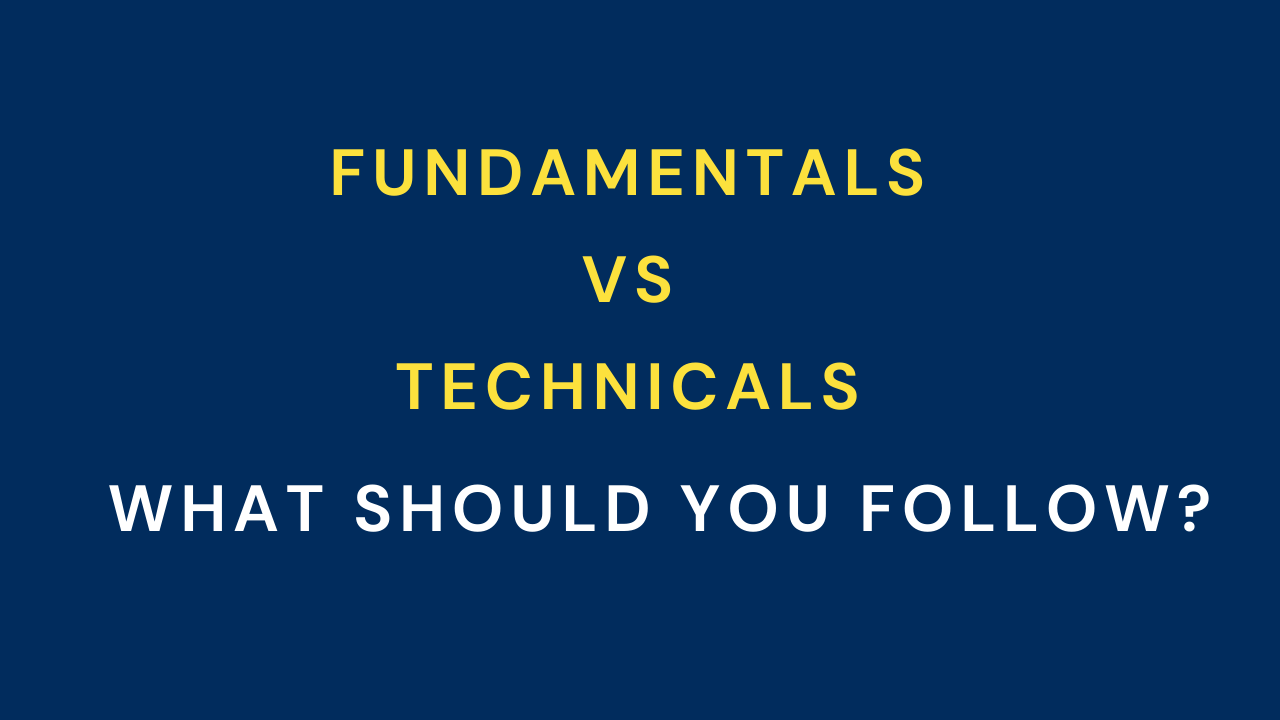Latest news & updates from us

You might sometimes ponder over the best practice to pick stocks – whether to look at the fundamentals or go by the technical charts? These are two distinct methods that sometimes give similar and sometimes give the contradictory view of the same stock. Then which one should you follow? Before going into that, let’s just quickly go over the crux of these two methods of analysing a stock
Fundamental analysis involves studying everything related to a stock. Say for instance what the company does, who manages it, how is the market for the product or service it sells – whether it is in demand or losing popularity, what is the general condition of the economy, industry, inflation, how much it sells and how much profit it makes, etc.
Technical analysis, on the other hand, involves predicting the future price of a share based on data gathered from the previous prices and trading volume of the stock. So basically, fundamental analysis tries to see whether the company is doing financially well and its future growth prospects. Technical analysis, on the other hand, shows sentiments of buyers and sellers of the stock through charts and diagrams showing previous movements and uses it to forecast future prices.
If the stocks you bought belong a financially strong company, but its price has moved quite high, chances are that you will lose money when markets correct. Technical analysis can help avoided this. It will be a good idea if you could use both together but that is quite difficult and time-consuming and hence not suggested.Both methodologies need thorough analysis of available data to get a hang of the present and predict the future performance of the stock. By the time you are able to find a stock that is both technically and fundamentally strong you might just lose the investment opportunity. So the general practice is to follow one of these methodologies for picking a stock.
For the layman, it is easier to understand and follow fundamental analysis. Some of the most popular parameters used in fundamental analysis are ratios like Price to Earning or P/E ratio of the stock, its Price to Book Value or P/B, Beta of the Stock, its Dividend Yield, the company’s Debt to equity ratio etc. These can be easily calculated from the financial data available from the published annual reports, quarterly results etc. and can be used to compare several stocks in the same industry to pick the one that looks strongest among the ones being compared.
Technical analysis is not so easily understood. Concepts like Relative Strength Index (RSI), Fibonacci Retracement, Simple and Exponential Moving Averages, Average Directional Index, Moving Average Convergence Divergence (MACD), etc. require a lot of studies. Analysts use sophisticated computer software that can do the technical analysis for you but they are quite hard on the pockets. Free technical analysis tools are available on the internet but you got to learn and understand what each of the parameters means and how you can use them to identify stocks. That is not an easy job.
Using both methodologies in tandem would be a good idea though not always feasible. Usually, fundamental analysis is used for picking a stock for long term investment while technical analysis is for the shorter investment horizon or trading. Timing an investment is crucial if you are investing in a technically sound but fundamentally weak stock. You can review the fundamental strength of stocks quarterly or annually but technical soundness is like a bubble.Your investment objective will decide the means of stock picking.
Exchange Traded Funds (ETFs): A must have in the portfoilio
27 March 2024
Taxation Simplified for Traders
21 March 2024
Why investors should keep track of macroeconomic indicators - explained
15 March 2024

Simply fill the details, connect your bank account & upload your documents.
Open An Account
Post a comment